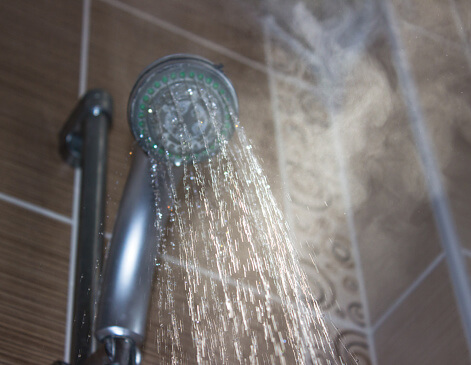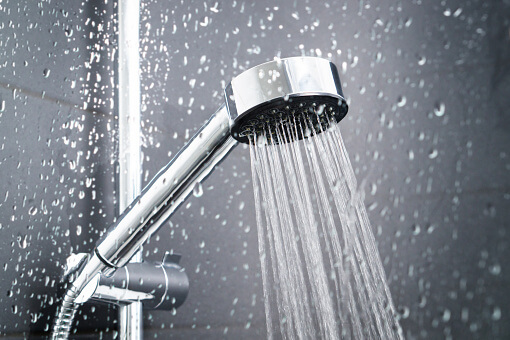
How to Remove Steam Marks From Bathroom Walls
Cleaners Talk is reader-supported. This post contains affiliate links, we may earn a commission at no additional costs to you. As an Amazon Associate we earn from qualifying purchases.
Whether you’re on the brink of having overnight guests or you’re the type of person that can’t rest until they have a clean home, steam marks are an annoying and embarrassing problem to have on your bathroom walls.
So, how to remove steam marks from bathroom walls?
Combine 1 cup ammonia, 1/2 cup vinegar, 1/4 cup baking soda and 1 gallon of warm water and fill a large spray bottle with the solution, which should be extremely effective on any steam marks without causing damage to your bathroom walls. Apply to the affected areas, then remove with a damp sponge.
What makes steam marks challenging is that water creates them. So, it’s difficult (although not impossible, as you’ll soon learn) to prevent them.
Ready to discover how to remove steam marks from bathroom walls? We have 2 ways to do so. The first is the gentle approach while the second one uses a stronger formula. Read on for our insider tips.
Understanding the “Steam Mark Instigator”
The reason for steam marks in your bathroom is thanks to science. When you shower with warm or hot water, tiny droplets of suspended humidity hang in the air.
These droplets are in a gas state as a result of evaporation. It’s the same process as steam from boiling water. But of course, you’re not bathing at such hot temperatures, so the condensation from evaporation happens at a relatively slower pace—but not slow enough for it to prevent damage to your bathroom walls.
As those droplets cool, they return to a condensed state, forming small water drops that congregate on your walls. Gravity then pulls down the droplets, creating a snowball effect with the pace of the droplets increasing as they grow larger by picking up more water molecules.
The end result?
Steam marks (water stains) using your bathroom walls as a canvas.
Two Options for Removing Steam Marks
Depending on the severity of your bathroom steam marks, you may need to experiment with different cleaning solutions to find which one works the best.
We’ll walk you through two options for removing these marks.
Option 1: The Gentle Approach
If you have wallpaper or paint bathroom walls, taking a gentle approach to wash them is important. Harsh chemicals can strip the paint or wallpaper away, causing an even bigger eyesore than your steam marks.
So, in this case, you’ll want to use a gentle cleaning product. In fact, you don’t even need to run out to the store to buy a special solution—a few drops of dish soap mixed in a bucket of water will do the trick.
Then, take a soft cloth and spot-treat your walls where you see steam marks. Make sure not to rub too hard, given how fragile bathroom paint and wallpaper are.
Option 2: A Stronger Formula
If your walls still have pesky steam marks after your attempt with the gentle approach, it’s time to harness a more powerful solution. So, grab a bucket and mix the following ingredients:
- Borax (½ cup)
- White vinegar (¼ cup)
- Ammonia (1 tbsp)
- Warm water (1 gallon)
Since this is a potent mixture, it’s best to test how your wall will react to it. So, pick a spot in your bathroom out of sight, like behind a garbage can. Then, rub a little bit of the mixture into the wall.
You’re looking for two things here—that the mixture doesn’t cause discoloration and that it doesn’t peel off your paint or wallpaper.
Some Important Cleaning Notes
Regardless of what product you use to clean your bathroom walls, how you clean them is crucial.
For starters, use a rag or sponge. You want to ensure that whatever you use has a non-abrasive surface.
Secondly, damp the material you use to clean; avoid washing your walls with it soaking wet. Otherwise, you could cause more water droplets on your wall that’ll lead to other steam-like marks.
Going along with that same theme, wipe down your walls starting at the floor and work your way up to the ceiling. That’ll help you catch any drips that happen to escape as you do your washing.
Finally, when your bathroom wall is wet from the rag, the steam marks will look like they disappeared right away. That’s a trick on your eyes. You’ll need to wait for the wall to dry before assessing the effectiveness of your cleaning product.
Finalizing Your Steam Mark-Free Bathroom Walls

Before you call it a day as you proudly stare at your clean bathroom walls, there’s one more step we recommend you take—rinsing your walls with water. That way, you don’t have to worry about unwanted streaks by accidentally leaving a little bit of the solution on your walls.
Just make sure to follow the process in the tips above. You don’t want to undo your work by using a cloth soaked in clean water that could leave water stains behind!
Tips for Preventing Future Steam Marks
Now that you know how to remove steam marks from bathroom walls, you’re no doubt wondering how to prevent them from happening again in the future.
One of the best ways to prevent steam marks is to take a cold shower. When water is cold, it doesn’t fall out of its liquid state, becoming a gas that reforms into those unsightly droplets on your bathroom wall.
If statistics like 29% fewer people calling in sick from work after starting a cold shower regimen still doesn’t convince you to start taking cold showers, rest easy. There are other strategies you can implement.
For starters, make sure your bathroom has plenty of ventilation. It can come in the form of bathroom fans that suck away humid air or windows that allow for cross ventilation.
In either case, the goal is to whisk away steam before it transforms from a gas to a liquid.
Furthermore, keeping damp clothes and towels out of your bathroom will prevent humidity from lingering in the air long after you finish your shower.
Finally, an effective trick for preventing steam marks on your bathroom walls is to keep a squeegee and a cleaning solution in your shower. It might not sound like fun, but giving your shower a few squirts of the solution and passing a squeegee over it is an excellent way to prevent steam marks.
Research shows that it takes an average of 66 days to form a habit. So, although it’ll require some discipline at first to clean your shower after showering, after a couple of months, it should feel like second nature.
Other helpful bathroom articles:

Sofia Rodriguez
As a professional house cleaner, I'm passionate about cleanliness. I write this blog to help anyone take better care of their homes and ultimately their loved ones.



